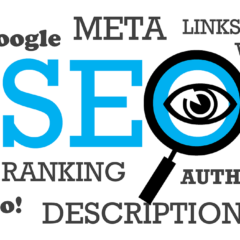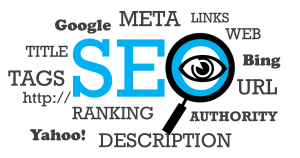Dental blogging
How to Find Your “Voice” and Compel a Positive Response to Your Dental Marketing Message
 “Imagine the person you’re writing to. Picture him or her as a friend. Believe that the (service) you’re (promoting) will improve your friend’s life. Figure out what it would take to convince you to buy the product.” – Paul Hollingshead
“Imagine the person you’re writing to. Picture him or her as a friend. Believe that the (service) you’re (promoting) will improve your friend’s life. Figure out what it would take to convince you to buy the product.” – Paul Hollingshead
“It’s not what you say, it’s how you say it.” That memorable phrase contains a “double-edged truth.”
On the contrary, what you say does matter. Mixed messages create confusion.
Equally true is how you communicate. Tone, delivery method, or “voice” can make or break your dental marketing message.
I’m a strong advocate for a particular tone of voice in the copy or content I create. And I’m diligent to coach my clients in the same.
Friend or foe?
You shouldn’t be forced to choose, should you? “Foe” is a bit too strong a label.
It’s not productive to view your readers, patients, clients, prospects, etc as “foes” to be conquered. “Friend” is a better perspective for your marketing promotions, blog posts, or conversations when the goal is to compel a response.
Paul Hollingshead’s words that introduce this post help establish that view in your dental marketing. Voice is the core idea when writing, promoting, or marketing your services.
How to find your voice and compel a positive response to your dental marketing message.
1-Use your imagination
It’s important to break free from the seller-prospect mindset when marketing your dental services. Remember, “People don’t like to be sold.”
This common approach sets up an adversarial relationship from the get-go. And you’ll adopt a “voice” that’s perceived that way too.
Rather…
As Hollingshead encourages, “Imagine the person you’re writing to. Picture him or her as a friend.”
- View your promotions as a conversation. Write conversationally – friend to friend.
- Use short sentences. Long sentences typically evolve into something too technical or wordy. Avoid “bloat” and “fluff” throughout your writing.
- Forget “English class.” Beginning a sentence with “And” or “But” is okay in this context. And (there you go…haha) a preposition is okay to end a sentence “with.” Remember conversational, friend-to-friend communication is not only common these days, it’s accepted (like it or not, thanks to social media).
- Use the “barstool” filter. Ask yourself if you would say it (what you’re writing) sitting across from a friend at a bar or table.
2-Deepen your beliefs
Believing in your message, service, or product should translate via your voice. If you sincerely believe it will improve someone’s health or life, how could you not communicate it in a compelling way.
Again, the friend-to-friend, conversational voice compels better than a sales-y, hype-y tone.
- List the “whys” of your product or service. Why is it necessary, useful, beneficial, etc.?
- Listen to comments and reviews. Readers, patients, and clients will tell you “why” they like or dislike your services.
- Write to problems and questions. Beneath a negative experience or review is a solution that will improve your marketing message. Fearlessly evaluate the negatives you hear or experience when promoting or applying your services.
3-Identify with the benefits
Walk-a-mile in your patient’s/client’s shoes. Keep the question in mind – “Would I use this, pay for this, try this, etc.?”
The answers will reveal the true, unvarnished benefits of your particular product or service. Features appeal to logic. Benefits connect with emotions.
Friend-to-friend, conversational communication is more emotional than it is rational or logical.
- Review your products and services searching for benefits.
- List the benefits of each service. Remember “state-of-the-art” is a feature not a benefit.
- Answer the question, “So what?” Confirm that your particular service or product actually leads to a compelling result. Identify that result and write to it as often as possible.
Find your “voice.” Make “friends” through your dental marketing content.
What a Back-Handed Criticism Taught Me About Watching My Language and How It Can Improve Your Dental Website Content
A criticism recently got under my skin. I prefer to roll with push-back but this one irritated me given my experience and expertise.
It involved a discussion about a website’s language, tone, and readability. By the way, each are vital on your dental website and in your dental marketing.
Let’s make one thing clear – I speak English as my first and only (for now) language.
I’ll explain why I’m sharing that bit of trivia in a moment.
My first words as a child were in English.
I’ve sat through boring English classes (no offense teachers or professors) at a high school, university, and post-graduate level. And as a professional copywriter and content marketing strategist I’ve had to unlearn a portion of what I was taught (some rules of grammar DO NOT APPLY).
I’ve learned about “word-economy” (how to say the most with the least amount of words) from some of the world’s best communicators and communication coaching settings.
Plus…
I have over three decades of experience using the English language to persuade, compel, inspire, motivate, celebrate, and comfort.
I have tens of thousands of hours writing and delivering presentations as a public speaker in a variety of venues using (Bingo!) the English language.
And I have close to an equal number of hours as a trained, professional writer/copywriter commanding the English language on behalf of my own and my client’s services.
So when I was questioned by a client (trying to make a point) whether English was my first language, understand why I was ticked. To clarify, the whole issue wasn’t about my alleged “butchering” of the English language.
The issue surrounded the voice, tone, and general design of the language that’s effective on a dental website. Dental practices and dental marketers often hire me to rewrite their content because what’s there lacks all the above – compelling voice, tone, and readable design.
What’s the deal?
The default on many websites (dentistry is no exception) is high word count (that lacks flow or purpose), wordiness (fluff and bloat that doesn’t offer solutions), and feature-heavy (”Hey, look how state-of-the-art equipped and educated we are…” with few if any stated benefits to the reader/site visitor).
Too strong?
Is it too strong a criticism if your readers aren’t compelled to read past your Home page graphics and headline? Or if your copy/content reads like a chapter out of the most recent CE course you took on osseointegration (i.e. it’s full of dental-speak that only dental professionals use and understand).
I’m not implying that your dental website copy or your dental marketing content should be “dumbed-down.” Frankly, that’s an insulting way to describe copy and content that should, above all, compel people to use your services to improve their health.
But for goodness sake make it easy for them to read and know what action to take next!
How to Create and Deliver Dental Content that People Can Understand and are Compelled to Act On
Watch your language.
Language is about being understood. It makes sense that if you need an interpreter or if your reader must Google the definition of a particular word or words used in your content – it’s not connecting!
Your readers connect with you word to word, line to line, and page to page IF they understand what you’re saying.
- Write your dental content for the general public. The education level of your target audience isn’t the benchmark. The benchmark is speaking clearly and compellingly about your services in a way that leads to a specific, intended action like a scheduled appointment, client contract, etc.
- Know your readers. Listen to their pains, concerns, and goals. The late, writer and leadership consultant, Stephen Covey, said it best, “Seek to understand then to be understood.” There is no connection without knowing. Knowledge of your readers leads to understanding what they lay awake at night thinking about, feeling, etc., that compelled them to land on your website or read your content in the first place. Write to that!
Take-that-tone.
Language is about understanding. Tone is about being heard.
Our grandson will ask, “Are you mad at me…?” It surprises me when he asks that because in the moment I’m not “angry” with him at all.
In reality, he’s perceiving my mood by the “tone” he’s hearing in my voice. If I answer a question somewhat “short” or abruptly he hears anger when I’m simply being brief and to the point.
- Write in a conversational tone. Use this tone more than 95% of the time in your dental marketing content. Why? It works because writing how you talk is how you’ll best be heard and get your point across.
- Keep the tone casual, crisp, and to-the-point. Punchy, short sentences compel better than long, rambling, wordy sentences. Remember, with content, being heard starts with being easy to read and follow.
Raise your voice.
This isn’t about volume. Voice is about being relevant.
I’m talking relevance to your audience. Okay, to soothe your occasional need to feel all intellectual and academic – if your audience is other dental professionals or colleagues go ahead and unload all the dental-speak you want.
That’s fine. They get-it.
But…
That’s not your audience on your dental practice website.
- Again, know your audience. Most of the time it’s everyday, ordinary people who have the need to visit your dental web pages because of mouth pain or some other oral health related issue. Period.
- Know how to use your voice. Internal web pages (Home page, About Us page, Services/Procedures pages) are for quick-scanning, easy-to-read, call-to-action content about the basics of your dental services. Your blog/article pages are for more detailed, educational, albeit easy-to-read and informative content that compels them to trust your expertise.
Now, was that so difficult to understand? I’m a bit tongue-in-cheek with that question.
I’m also biased about the language, tone, and voice you use on your dental website and in your dental marketing content.
Keep it real. And whatever you do, keep it readable. Or…your site visitors and readers are gone with a “click.”
That should really get-under-your-skin.












